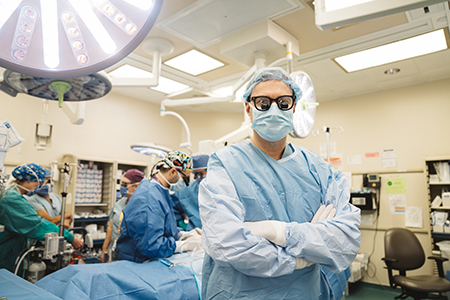
For the love of liver
Liver transplantation is the only cure for end-stage liver disease and is the treatment of choice for certain cancers. However, this exacting procedure is further limited by the availability of donor organs, as many patients die waiting for a viable liver. But the liver transplant team at London Health Sciences Centre (LHSC) think they have the answer.
Expanding the donor pool
As a first-in-Canada initiative, the normothermic regional perfusion program (NRP) will use a technique to reverse damage to organs donated after circulatory death (DCD) by restoring blood flow during the recovery process. DCD organs, particularly the liver, suffer a lot of damage during the recovery process and don’t function as well post-transplant. As a result, DCD donor selection criteria are very stringent, with only the most ideal donors being selected for donation.
Dr. Anton Skaro, director of liver transplantation at LHSC, wants to expand the donor pool by recovering organs from DCD donors typically excluded from donation. This innovative approach will see the team perfuse the donor’s abdominal organs with re-oxygenated blood before recovering and transplanting the liver to a consenting recipient. When compared to standard DCD liver transplant, the NRP technique should improve organ quality and reduce complication rates.
“Using the NRP technique allows more livers to be transplanted and wait times for transplants to be reduced.”
Dr. Mayur Brahmania, hepatologist, LHSC
 Pictured (from left to right): Dr. Juan Glinka, Surgical fellow, Dr. Anton Skaro, Surgical director of liver transplantation at LHSC and Dr. Ephraim Tang, Liver transplant surgeon | We're building a teamNow more than ever, our donors are needed to build a highly specialized research team; one designed to evolve this innovative program to benefit other organ groups such as kidneys, heart and pancreas.
The facts
|
A net-0 wait time
This increase in available organs could eliminate the waitlist for liver transplantation at LHSC, and be the springboard to establish the NRP technique throughout Ontario, as well as the rest of Canada. In short: the NRP program will save the lives of countless patients awaiting liver transplantation.
Donors are the difference.